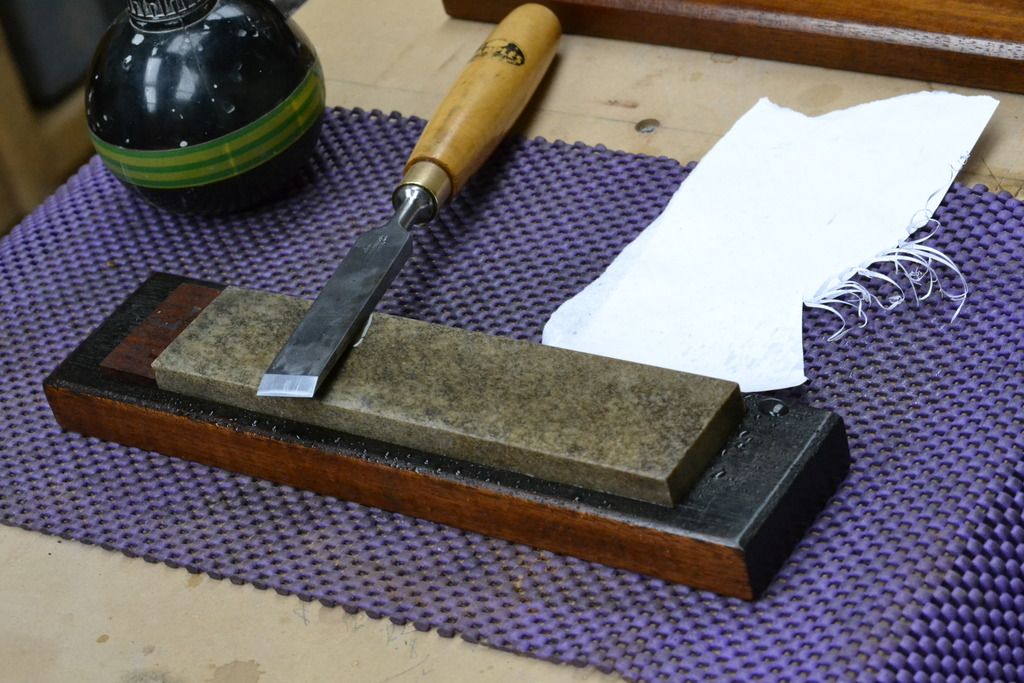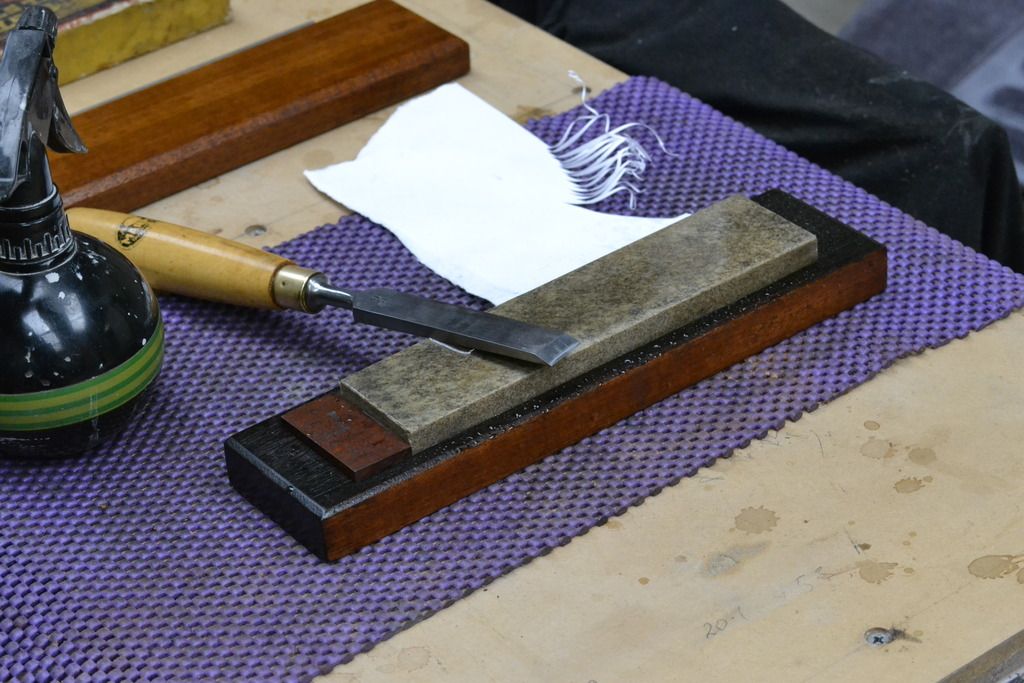As requested; I am forwarding the feedback after testing the Arkansas stone with water as the only lubricant. The 1st observation to note was that after spraying the top surface of the stone with water, the water did not soak within the stone, but maintained a unified float of film. That indicates to me that the stone is not porous by nature, but more tightly bound within its make up.
The 2nd observation to make is that when the stone surface was being worked by the chisel, the sound being given off was much deeper in tone to that experienced when oil was used as lubricant. A much more grittier sound. One could feel the chisels edge being worked in closer contact with the grain structure of the stone, versus having a float of oil interfere between the 2 surfaces.
The time taken to form an appreciable secondary bevel imo was 1/2 that compared to using oil, but apologies need to be made, as I did nor record the exact time difference. The sheen formed on the secondary bevel, to my eyes, looked no different to that being worked on oil, but one would expect it to be slightly lower.
The level of sharpness straight from the stone more than matched my requirements within woodworking, as testament by the paper test shown within the 2 following photo's.
Conclusion; as a once only test, I see no valid reason to return to using oil on this Arkansas stone. If any issues later arise on the question of water versus oil in preventing the stones surface from glazing over or clogging up, that would be dealt with during the normal practice of resurfacing during periodical stone flattening.
All attempts have been made to remain impartial within my findings.
Hopefully you found the above mentioned topic of some interest. If you decide to de-oil any of your sharpening stones in the future, make sure they are not a man-made Norton Crystolon/Carborundum, as this will likely destroy the manufacturers oil pre-fill.
On to the photo's.
regards Stewie;








